I thought I would start by saying that the university, like other educational institutions, is keeping abreast of the advice coming from Government in the current circumstances. Consequently, as and when I have anything definite, I’ll let you know regarding upcoming Centre events, and we will similarly inform those involved whether as speakers, attendees, volunteers etc. However, in the meantime individual vigilance is obviously important and there is plenty of information through official channels, including NHS England and other public health and safety organisations.
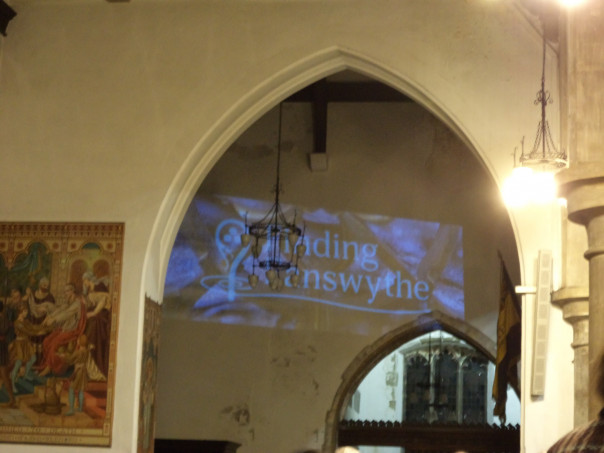
Before I get to the main event this week, I thought I would mention that Dr Diane Heath’s ‘Medieval Animals’ project is almost ready to go to the National Heritage Lottery Fund because she is collecting together the final letters of support. Equally, Professor Louise Wilkinson’s bid with others from the Brighton and Sussex Medical School to the Wellcome Trust will be going in shortly; as will a joint AHRC application involving the universities of Southampton, Reading and Canterbury Christ Church, led by Professor Craig Lambert, on English Calais.
Other things I have been involved in recently for the Centre include several meetings, such as a discussion with Didier Rochard from the ‘Romney March: The Fifth Continent’ HLF-funded project on possible ways we could be involved https://fifthcontinent.org.uk/about-us/ . Among the ideas put forward were joint workshops and other public engagement activities, not least because Dr Gillian Draper (Visiting Research Fellow) and I were for many years heavily involved in the Romney Marsh Research Trust http://rmrt.org.uk/ , including its many publications, guided walks, conferences and community research projects.
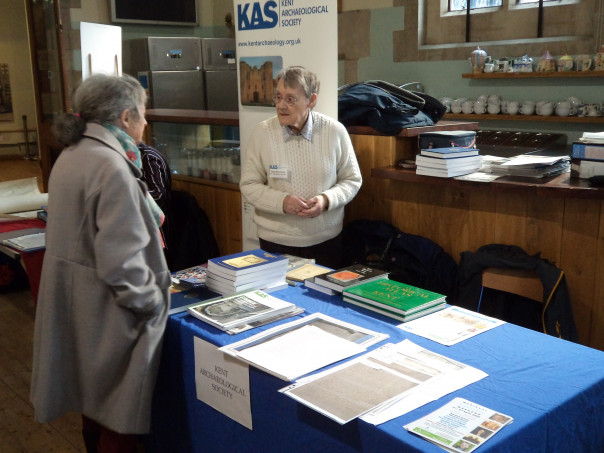
In addition, yesterday (Saturday), I joined Gerald Cramp (President of Kent Archaeological Society), Shiela Broomfield (KAS Membership Secretary) and her husband Chris to run a stall at the Local History Day at Maidstone Museum where I was representing KAS and the Centre. This was a valuable event because we were able to talk to members of the public, as well as people from other local organisations involved in history and archaeology about the activities and events organised by both, including for the Centre the Medieval Canterbury Weekend 2020: https://www.canterbury.ac.uk/medieval-canterbury
So to the main event, on Friday evening I joined a large audience in the parish church of SS Mary and Eanswythe to hear about the findings from the joint CCCU and Canterbury Archaeological Trust HLF-funded project on ‘Finding Eanswythe’. Now some of you may have caught this on first the regional news and more latterly the national press, but I’m going to bring you a snapshot of what we learnt sitting in the church on Friday. Having been warmly welcomed by the new incumbent of four weeks, we heard next from Dr James Lloyd, historian and archivist, on what little we know from historical sources about St Eanswythe. At he said this is perhaps surprisingly small; and is not helped by her omission from Bede’s History. Furthermore, the 8th -century charter relating to St Eanswythe land is a forgery and we have to look to the 10th century and even later texts to begin to find out anything in terms of written evidence. Nevertheless, these later sources, such as the Kentish Royal Legend, her vita among those of over a hundred other saints, and details of her miracles, do offer some valuable pointers. For example, we are told her parents were King Eadbald and Queen Emma, that she was buried at Folkestone at the minster she had built there, that she was a young woman when she died after a pious, but short life, and that as well as what might be seen as ‘standard’ miracles, including resurrecting a goose, she had made a stream flow up hill to the Bayle.
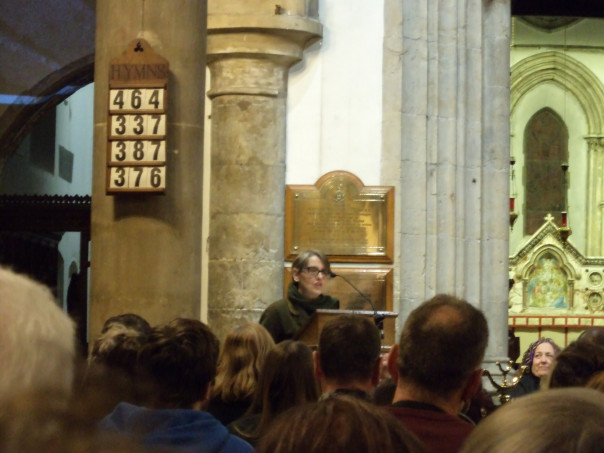
Dr Lesley Hardy (lecturer in history at CCCU) took up the story, explaining that when the early Tudor historian John Leland wrote about Folkestone, he mentioned that he had found the remains of an old nunnery with lots of Roman brick and tile, an eroded shoreline in which there were many bones sticking out, and that St Eanswythe’s relics, having been translated on 12 September 1138 (henceforth her feast day), rested in the refounded priory and parish church of SS Mary and Eanswythe in Folkestone further inland. Interestingly, part of this narrative was repeated by the Elizabethan historian William Lambarde (his Perambulation published in 1570), who, as well as noting that ‘after her death, she was by the policy of the Popish priestes, and the follie of the common people, honoured for a Saint’, reported that to save her relics from being ‘devoured’ by the sea, they had long ago been translated to the church of St Peter (thereby preserving the memory of Eanswythe’s minster to SS Peter and Paul). Of course, this double dedication was totally appropriate for a granddaughter of King Ethelberht who had been instrumental in helping St Augustine establish his abbey at Canterbury.
This period between Leland and Lambarde is very important for, as Lesley, explained it was during this time that the change from Catholicism to Protestantism saw the sweeping away of the cult of saints, the destruction of shrines such as St Eanswythe’s, and the whitewashing of the walls of churches, thereby obliterating the many paintings of saints and other Christian images – as seen in the contemporary Folkestone churchwardens’ accounts. Moreover, even though the level of devotion to St Eanswythe in late medieval Folkestone is difficult to measure, among the many altars and images remembered by local testators, some did leave bequests to her light, such as William Jenkyn (1473) and William Wylmenton two years later, while William Frances (1482) wanted two silver spoons to be given to her head [shrine] and Thomas Grubbe (1528) gave a taper of 4d to the shrine of St Eanswythe. Such devotion was presumably still in evidence amongst at least a few in the following decades who seemingly decided to save her bones by hiding them in a lead casket in the chancel wall where they were to remain for over 300 years.
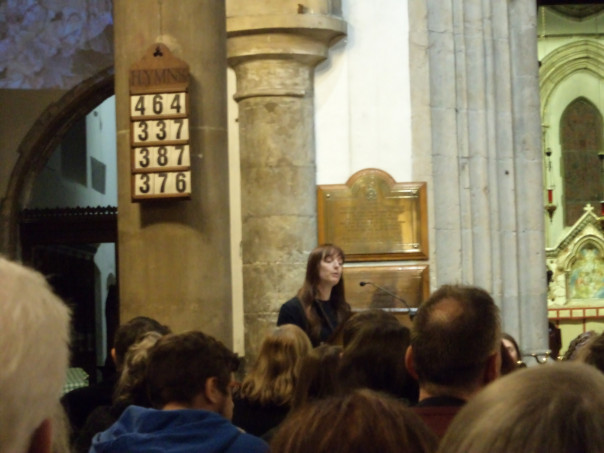
The next speaker, Judy Doherty a volunteer at the church, picked up the story in the mid 19th century and the work of Canon Matthew Woodward. As vicar there, he was heavily involved in renovating the church under the influence of ideas from the Oxford Movement. During the renovation, Woodward’s workmen found a small cavity in the north chancel wall and under a slab was found the casket with its bones. Woodward’s excitement meant that he wrote to The Times saying that he had found the reliquary and relics of St Eanswythe. Such a find brought considerable interest, the celebrated antiquarian Canon Scott Robertson writing a report about the investigation in the Kent Archaeological Society’s journal Archaeologia Cantiana in 1886, where he agreed that it might be the relics of the Folkestone saint.
Dr Ellie Williams (osteo-archaeologist and lecturer at CCCU) took up the narrative, explaining that she with others, including Dr Mike Bintley (previously CCCU, now Birkbeck) at Canterbury Christ Church had investigated a far more recent report on the bones. This had led them to the current investigation, which had drawn on the expertise of several specialists from elsewhere, and the use of the latest scientific techniques. Nevertheless, this is still a work in progress but from setting out the bones, albeit they are in a fragile state, she and the team confirmed it was the skeleton of a young individual, likely to be female, who had suffered some minor injuries to two fingers and her foot. Although not yet done, the team would like to take a small sample to do some stable isotope work which should yield evidence about where ‘she’ had lived and her diet. In addition, if the scientists are able to look at ‘her’ ancient DNA (using a tiny sample taken from a tooth root), they may be able to provide details of ‘her’ hair and eye colour.
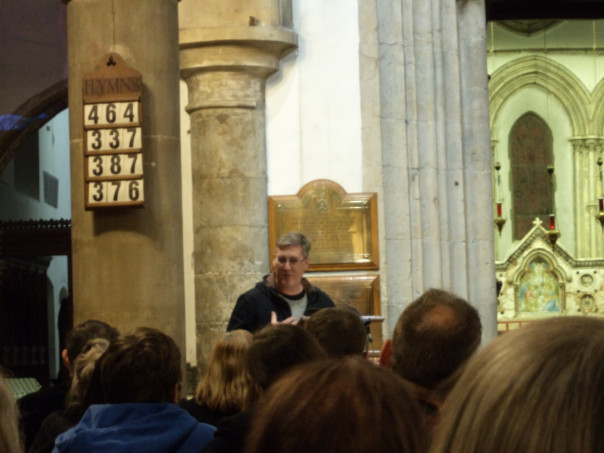
Ellie then passed the microphone to Dr Andrew Richardson (Canterbury Archaeological Trust), who put forward the proposition that could this be St Eanswythe. As a way of keeping his audience on tenterhooks, Andrew went back over what is known about her, and he explained to his audience that if she was indeed the daughter of Eadbald and Emma, this means the traditional foundation date for her nunnery at Folkestone is wrong. This traditional narrative has her birth as 614, the foundation of the minster as the early 630s and her death as 640. However, King Eadbald had married his stepmother in 614 which put him on a collision course with the Church and he ruled as a pagan king before he had a change of heart in 624 when he put aside his wife/stepmother, converted to Christianity and married Emma a Frankish noblewoman. They had two sons as well as Eanswythe, and Eadbald died in 640. This means that if Eanswythe died as a young woman, between the ages of 17 and 22 years of age and in line with the skeletal remains, her dates must fall within 641 and 663. For the team, therefore, the radio-carbon dates offered a crucial piece of evidence and this analysis had been undertaken at Queen’s University, Belfast. Andrew drew this out further but I’m going to go to the results. Stephen Hope and his team at Belfast had given Andrew the news he, Lesley and the others had hoped for because the analysis showed that the young person had died in the 650s or early 660s, just the time span postulated by Andrew. Consequently, the project has probably found its royal Anglo-Saxon saint!
Other speakers, including one of the churchwardens and the curator of Folkestone Museum highlighted the importance of treating the bones properly, including work on their conservation, as well as thanking all the organisations that had supported the project. They were followed by the Bishop of Dover who reiterated these points and that St Eanswythe was a wonderful exemplum of Christian humility and devotion, who would be honoured accordingly. Having drawn the proceedings to a close through prayer, the assembled company were invited back to the Town Hall to celebrate this momentous occasion, although I left them at this point. However, I think I’ll end by repeating Andrew’s point that in some ways this is only the beginning – if this does indeed mean they have her bones, they are seemingly the only surviving relics of the Kentish royal family. Consequently, there is the potential through DNA testing to explore further the family which ruled Kent about 1500 years ago.
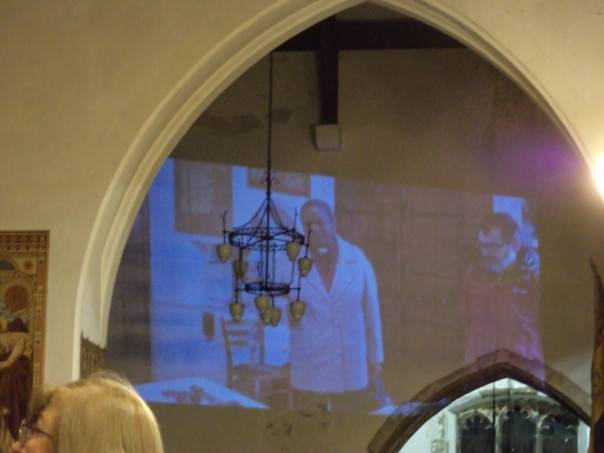
 Centre for Kent History and Heritage
Centre for Kent History and Heritage Sheila Sweetinburgh
Sheila Sweetinburgh 2703
2703

